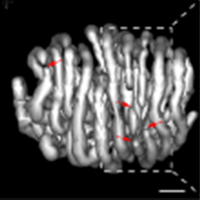Roles of Sox9 and Fgf9 in testis development
Roles of Sox9 and Fgf9 in testis development is a Research Project for the Sex Development Research Group, under the Centre for Endocrinology and Metabolism.
Project Leader
Summary
We have shown that SOX9 and FGF9 are key proteins during male sex determination. We are studying missense FGF9 mutations in causing defects in sex development (DSD) and / or bone growth (synostosis).To identify the molecular pathways that SOX9 and FGF9 act through, we are undertaking gene/protein expression analyses in Sox9 and Fgf9 knockout gonads.
Description
The testes serve important functions during fetal development and adulthood. They produce hormones which stimulate the development of the internal and external male genitalia and are responsible for sperm production within the seminiferous tubules. Perturbations in testis development lead to abnormalities of male sexual development such as gonadal dysgenesis with associated testicular tumours, ambiguous external genitalia, male-to-female sex reversal, and infertility.
Our aim is to identify the underlying molecular and cellular events that cause human disorders of sexual development.
In mammals, the sex-determining region of the Y chromosome gene (Sry) determines the bipotential gonad to develop into a testis rather than into an ovary. In the mouse at embryonic day E11.5 (in humans at 7 week gestation), Sry becomes expressed in bipotential supporting cells (primordial Sertoli/follicle cells) and triggers Sertoli cell fate by initiating the transcription of Sox9 which in turn activates the FGF9/FGFR2-signalling pathway.Thisleads to increased Sertoli cell proliferation and to the development of testis cords, the future seminiferous tubules. We have established conditional Sox9 knockout and Fgf9 knockin mice which both show XY male-to-female sex reversal. The pathway is antagonised by the actions of ovarian factors Foxl2 and Wnt4.
To identify the molecular pathways that SOX9 and FGFR2 act through, we are undertaking detailed gene expression analyses on these gonads by immunohistochemistry, in situ hybridisation and RT-PCR.
We have previously shown that FGFR2 expression in pre-Sertoli cells is required for male sex determination. Consequently, the XY gonads develop as ovaries.
Since FGFR2 remains strongly expressed in Sertoli cells during fetal wildtype testis development, we speculate that FGFR2 might also play a crucial role in maintaining Sertoli cell identity. To test this hypothesis we will inactivate Fgfr2 specifically in Sertoli cells after testis formation.
Funding
- National Health and Medical Research Council
Outcomes
- Identified novel genes involved in human disorders of sexual development
- Established the molecular pathways that SOX9 and FGFR2 act through during testis development
Selected publications
Rahmoun M, Lavery R, Laurent-Chabalier S, Bellora N, Philip G, Rossitto M, Symon A, Pailhoux E, Cammas F, Chung J, Murphy M, Bardwell V, Zarkower D, Boizet-Bonhoure B, Clair P, Harley V, Poulat F (2017) In mammalian foetal testes, SOX9 regulates transcription and splicing of its target genes by binding to genomic regions with conserved signatures. Nucleic Acids Research 45(12):7191-7211.
Bagheri-Fam S, Ono M, Li L, Zhao L, Ryan J, Lai R, Katsura Y, Rossello FJ, Koopman P, Scherer G, Bartsch O, Eswarakumar JV, Harley VR (2015) FGFR2 mutation in 46,XY sex reversal with craniosynostosis. Hum Mol Genet 24(23):6699-710.



